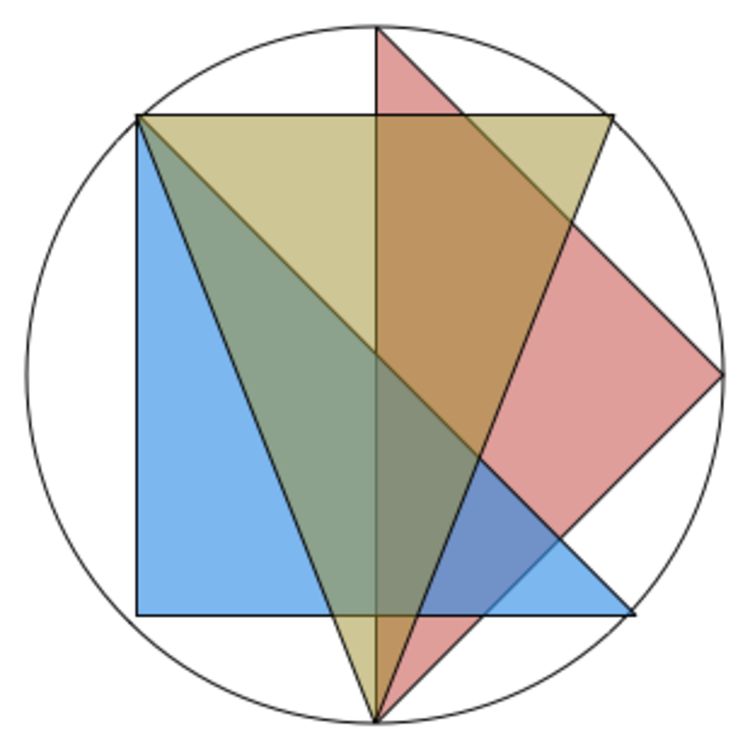Stop going in circles
 Suppose a regular octagon is inscribed in a unit circle. If
of the vertices of this octagon are chosen uniformly at random, then the expected area of the triangle formed by these
vertices is
Suppose a regular octagon is inscribed in a unit circle. If
of the vertices of this octagon are chosen uniformly at random, then the expected area of the triangle formed by these
vertices is
,
where are all positive integers with being coprime and square-free.
Find .
Note: may not necessarily be distinct.
The answer is 28.
This section requires Javascript.
You are seeing this because something didn't load right. We suggest you, (a) try
refreshing the page, (b) enabling javascript if it is disabled on your browser and,
finally, (c)
loading the
non-javascript version of this page
. We're sorry about the hassle.
There is a general formula for a regular n -gon inscribed in a unit circle, where the expected area of a triangle so specified is
2 ( n − 1 ) ( n − 2 ) 3 n ∗ cot ( n π ) .
Plugging in n = 8 yields an expected area of 7 2 ( 1 + 2 ) .
Thus a ∗ b ∗ c ∗ d = 2 ∗ 1 ∗ 2 ∗ 7 = 2 8 .
I won't prove this formula but I will provide a method later that is more laborious. For now I just wanted to get something posted in case anyone wants to make a comment or query.
EDIT: O.k., now for some details .....
Labeling the vertices clockwise as 1 through 8 , (the choice of which vertex is labeled 1 being arbitrary), we can form ( 3 8 ) = 5 6 triangles, with a great deal of repetition in sizes. We have essentially 5 different triangles, similar to one triangle with vertices ( a , b , c ) as follows:
(i) 8 triangles similar to ( 1 , 2 , 3 ) , which has area 4 2 ( 2 − 2 ) ;
(ii) 1 6 triangles similar to ( 1 , 2 , 4 ) , which has area 2 1 ;
(iii) 1 6 triangles similar to ( 1 , 2 , 5 ) , which has area 2 2 ;
(iv) 8 triangles similar to ( 1 , 3 , 5 ) , which has area 1 , and
(v) 8 triangles similar to ( 1 , 3 , 6 ) , which has area 2 1 + 2 .
We can then take the weighted average of these triangle areas to obtain the aforementioned solution.
I'll leave it as an exercise for the reader to verify the area values for triangles (i) through {v} found above, (i.e., I'm getting tired of typing. :) )